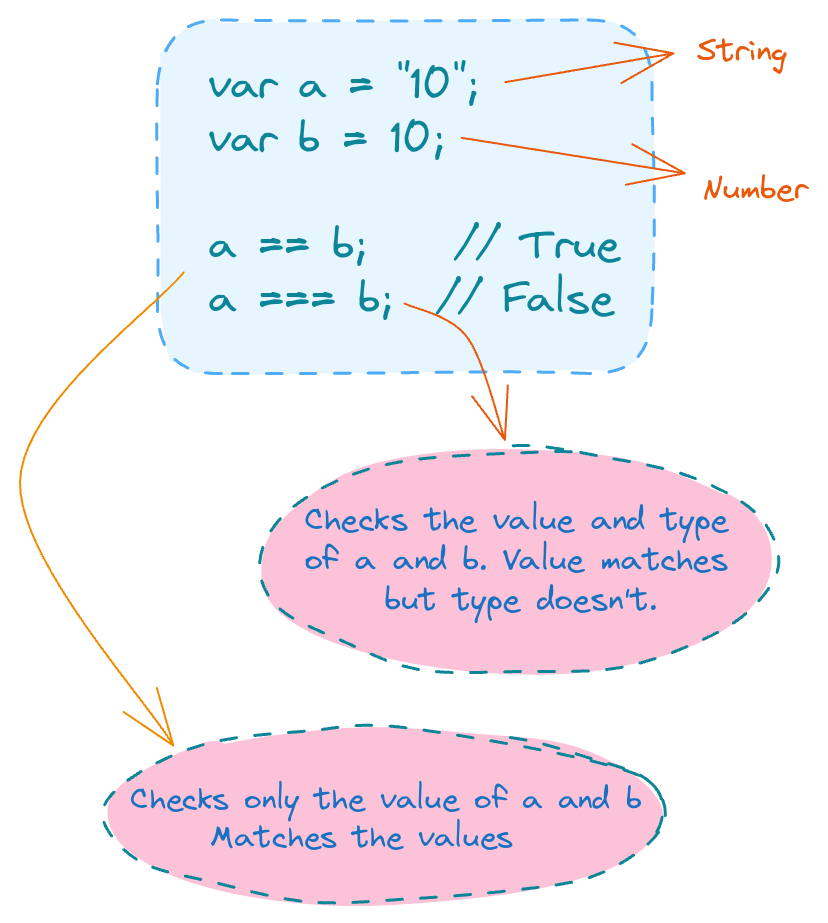JavaScript has both strict and type-converting comparisons:
- Strict comparison (using
3equal signs like ===) checks for value equality without allowing for coercion - Abstract comparison (e.g. ==) checks for value equality with coercion allowed

Here are some simple equality rules:
- If either value (aka side) in a comparison could be the
trueorfalsevalue, avoid==and use===. - If either value in a comparison could be of these specific values (
0,, or[]-- empty array), avoid==and use===. - In all other cases, you're safe to use
==. Not only is it safe, but in many cases it simplifies your code in a way that improves readability.
xxxxxxxxxxvar a = "42";var b = 42;a == b; // truea === b; // falseOUTPUT
:001 > Cmd/Ctrl-Enter to run, Cmd/Ctrl-/ to comment


